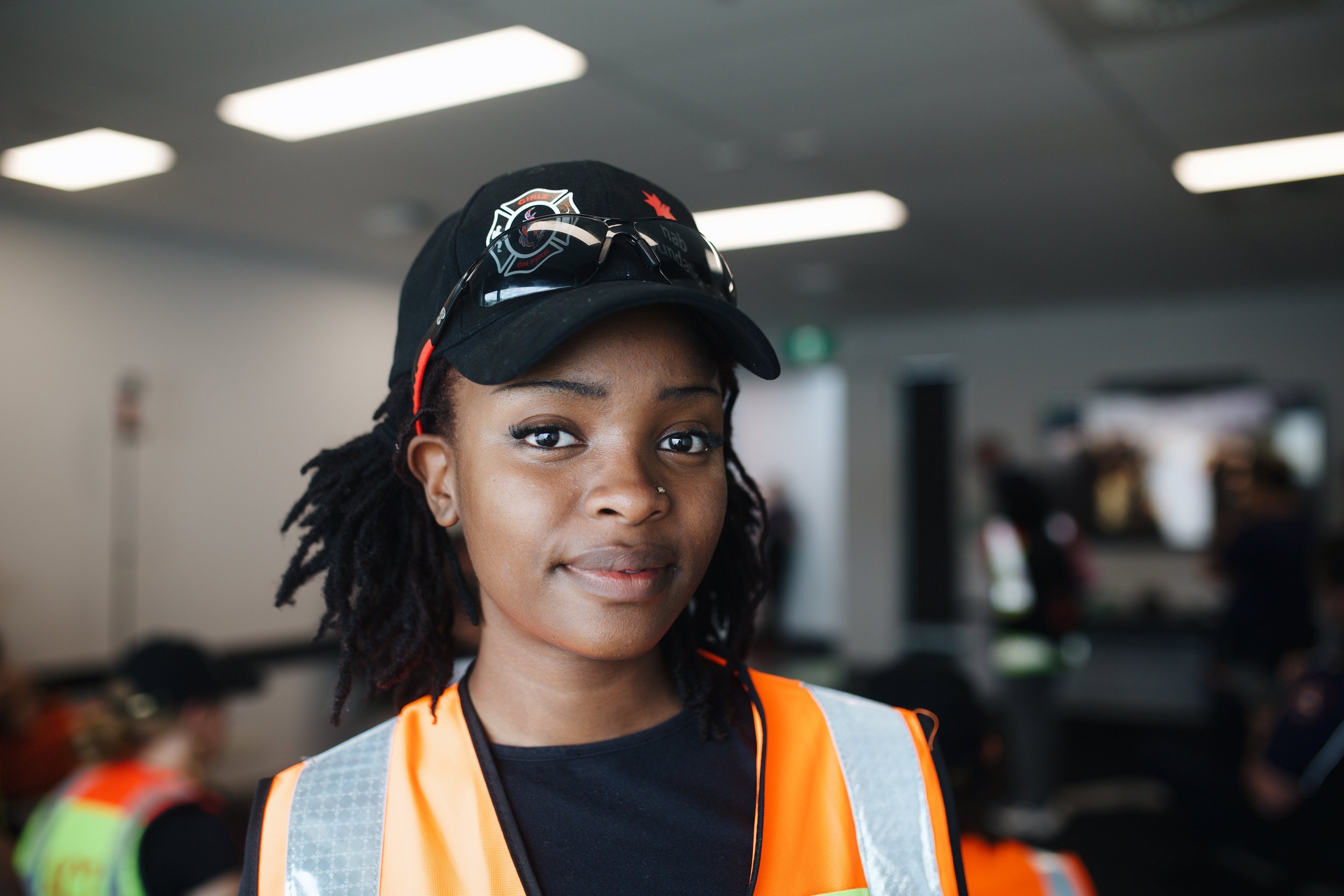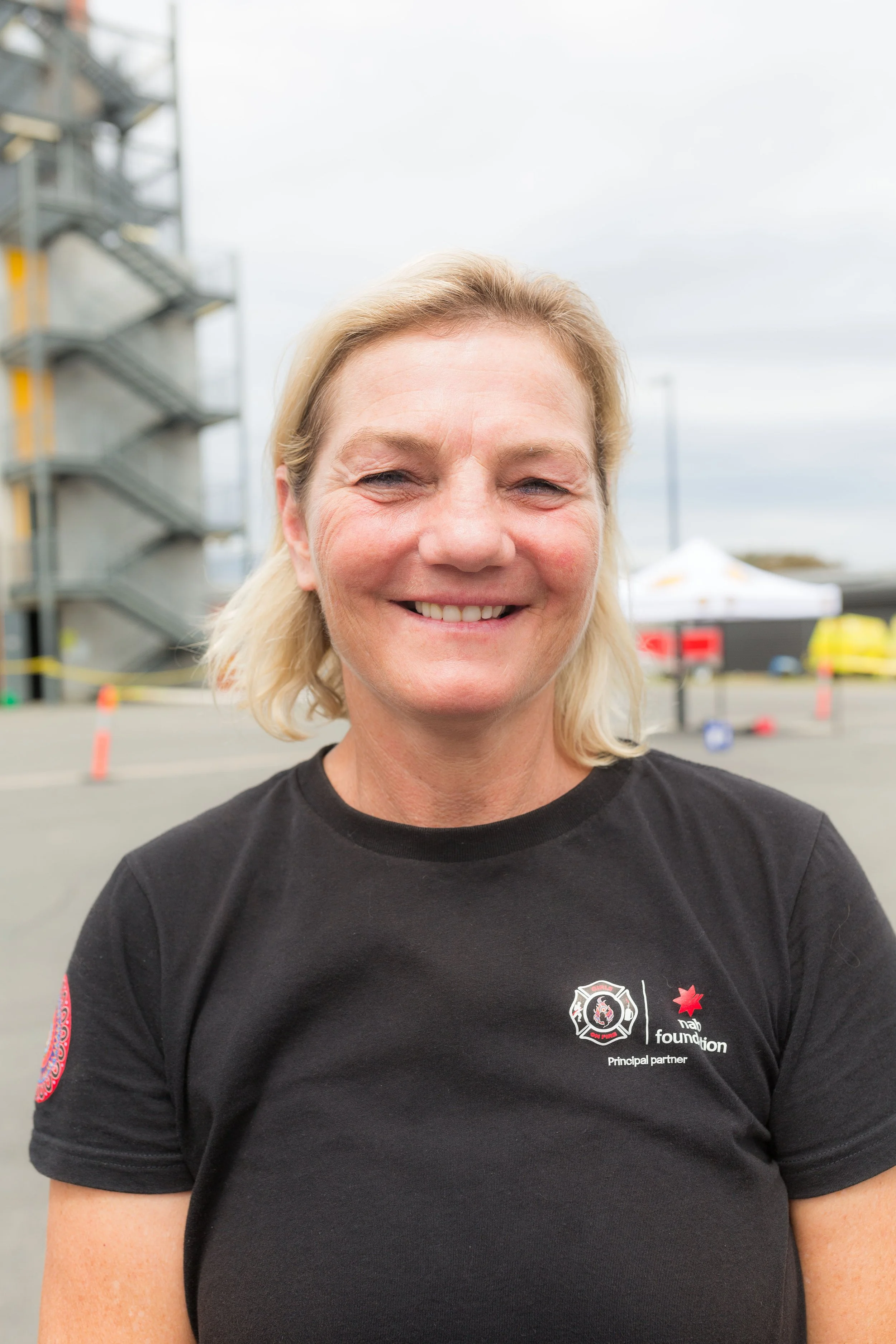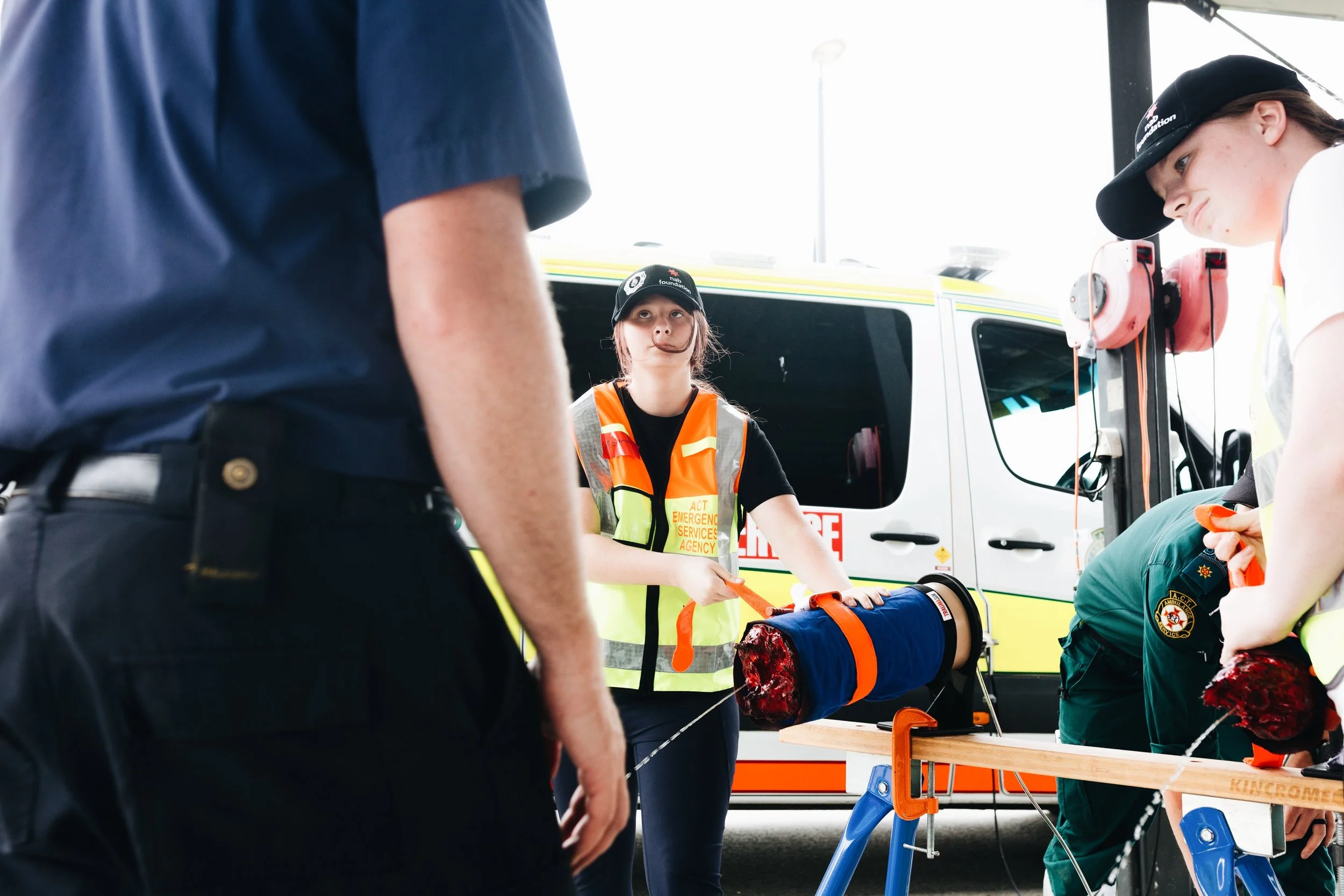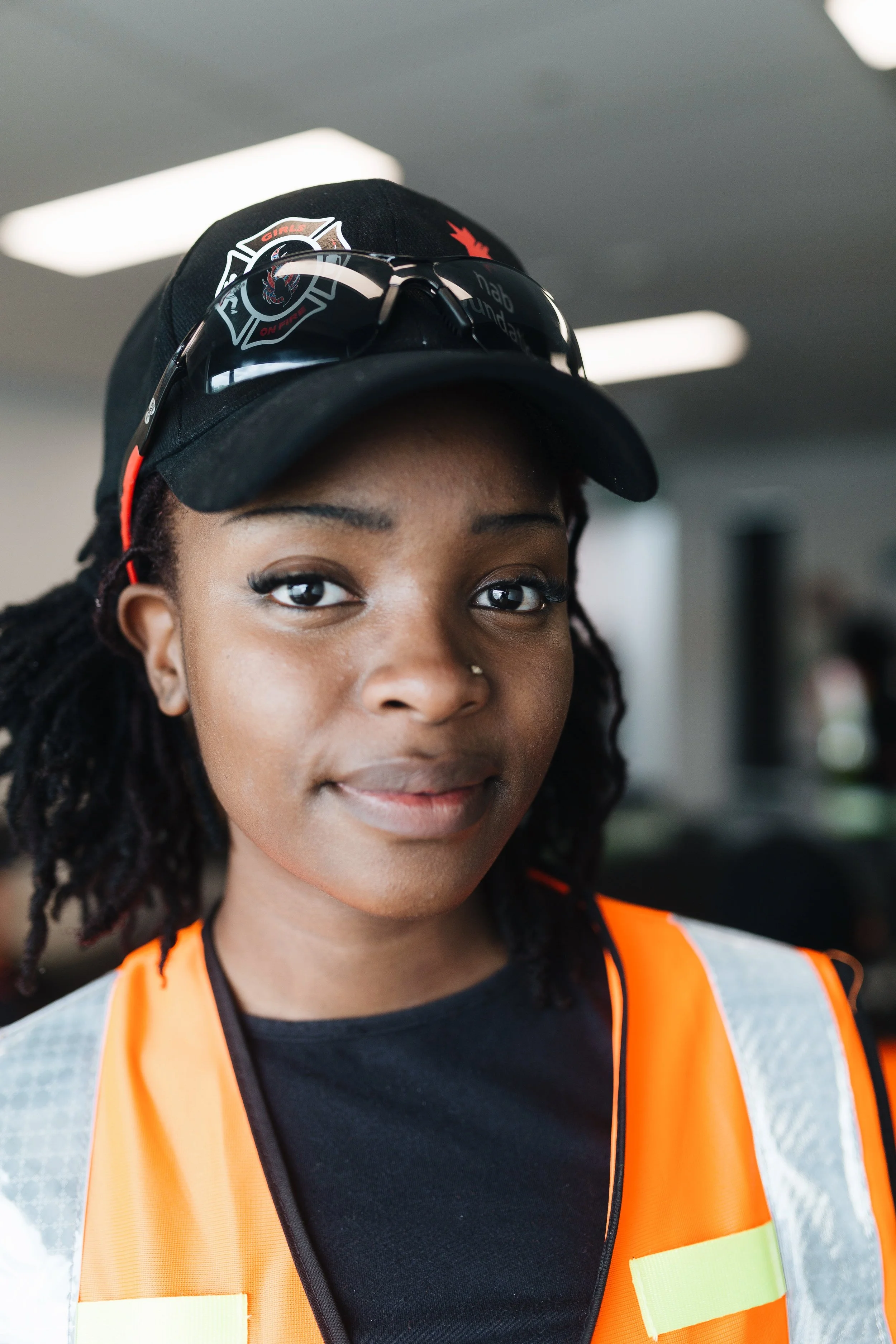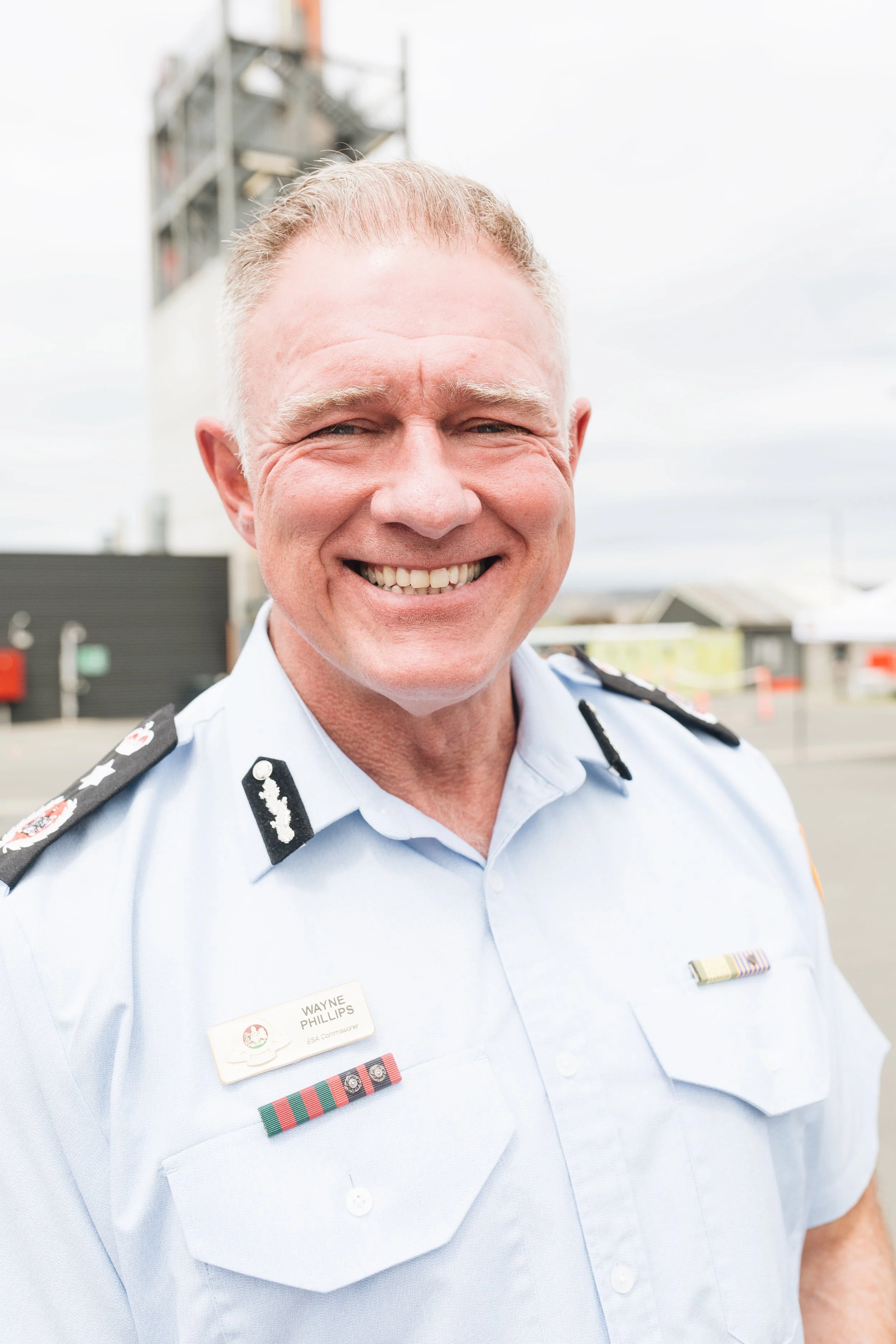Lighting the Way: How Girls on Fire is Igniting the Next Generation of First Responders
Girls of Fire participant, Matisha Bang. Photo: Elise Searson Prakaash
The smell of smoke and adrenaline lingered in the Canberra air, but this time, it wasn’t from a bushfire. Thirty-three young women from ten local high schools had traded classrooms for command posts, stepping into helmets and high-vis vests for a week of firefighting, rescue drills and teamwork as part of the Girls on Fire program.
Chief Executive Bronnie Mackintosh knows exactly why these programs matter. “Everyone now has been affected by some kind of natural disaster, be it floods, fires or the pandemic,” she said. “So we teach an all-hazards, all-emergencies preparedness model.”
Chief Executive of Girls on Fire, Bronnie Mackintosh. Photo: Elise Searson Prakaash
Born from Fire and Rescue NSW, Girls on Fire was created to address one of the emergency sector’s biggest challenges - the gender gap. For Mackintosh, visibility is everything. “Many of these young women have never seen a female firefighter before. Just that visibility coming into an arena surrounded by women leaders, firefighters and change makers - it’s transformative,” she said. “When you give women the power to move their bodies, to be praised for technical skills and strength, you enable them to thrive.”
The Program: From Campfire Sparks to a National Movement
The Girls on Fire program began with a single camp at YMCA Camp Yarramundi, where high-school students learned practical firefighting and rescue skills under the mentorship of women in emergency services. What started as a small pilot soon became a state-backed initiative. When COVID-19 hit, the team pivoted online with Virtually Possible, an innovative digital safety course. Within a few short years, Girls on Fire expanded across New South Wales and beyond - delivering fire and cultural inclusion camps in regional towns, launching LGBTQIA+ inclusive programs during Pride Month, and now trialling vocational pathways in Juvenile Justice and youth engagement. Backed by the NSW Investing in Women grant and national partners like the NAB Foundation, the program has transformed from a grassroots idea into a growing national movement - empowering girls to build confidence, capability and community resilience wherever they live.
Girls on Fire participants perform a staged life saving procedure. Photo: Elise Searson Prakaash.
Innovation on the Fireground
The program’s newest feature is a Virtual Reality hose simulation, giving participants the chance to experience the physical and mental demands of firefighting in a safe, controlled environment. Using VR headsets and motion-controlled hoses, participants navigate realistic fire scenarios like managing water pressure, reacting to fast-changing conditions, and learning teamwork under pressure.
Catherine Song using the VR hose simulator. Photo: Elise Searson Prakaash.
The technology was developed with input from frontline firefighters and safety educators to bridge the gap between classroom learning and field experience. It helps participants build confidence in their technical abilities before stepping into live drills, offering a modern, accessible approach to emergency training that reflects how firefighting and rescue operations are evolving.
The Experience: Breaking Stereotypes, Building Strength
For Catherine Song, a Year 11 student who joined the program after spotting it on her school’s careers board, Girls on Fire offered both relief and inspiration. “School is really stressful - exams, pressure, all of it,” she said. “This is such a good mix of physical activity, meeting new people and having fun.”
Catherine Song. Photo: Elise Searson Prakaash.
Catherine’s still deciding between medicine, the ADF and firefighting or maybe music - but she says the experience has shown her what she’s capable of. “It’s a good break from academics, but it’s also showing me that I can handle challenges,” she said.
Her classmate Matisha Bang felt the same surge of confidence. “I feel really powerful like I hold all the strength,” she said. “It’s something I never thought I’d do because of society’s standards and just being a girl. I’m really proud of myself for doing it.”
Matisha Bang. Photo: Elise Searson Prakaash.
Bang’s father, she added, was “really excited” to hear about her day on the fireground. “He told me to tell him everything about it when I got home,” she said, smiling.
The Impact: From Sparks to Systems Change
At the ACT Emergency Services Agency training grounds, Minister for Women Marisa Paterson praised the Girls on Fire program for its empowering impact on participants. She said the 33 young women involved had gained confidence, skills and inspiration from the female firefighters mentoring them, calling it a powerful example of how hands-on engagement with emergency services can open new pathways for women to serve and lead.
Minister for Women, Marisa Patterson. Photo: Supplied and photographed by Hannah Head.
For ESA Commissioner Wayne Phillips, the ripple effect goes well beyond recruitment. “Traditionally we don’t see many women represented in urban fire services,” he said. “What we wanted to do here is show young women that they can be part of any of these agencies; and that they already have the resilience and problem-solving skills to step up when their communities need them.”
He believes Girls on Fire not only inspires future firefighters, but strengthens communities. “It’s about empowering them,” Phillips said. “Even if they never join a service, they become that reliable first responder when we’re not there.”
ESA Commissioner Wayne Phillips. Photo: Elise Searson Prakaash
Across Australia, the program has now run in rural and remote communities from Broken Hill to Bourke and Canberra, giving hundreds of young women the chance to train alongside real emergency crews. “There’s no reason it can’t catch on everywhere,” said Mackintosh. “We’ve proven the concept and if we can take this program anywhere, we can make our communities safer, build capacity for our emergency services, and raise a generation of more resilient young people.”
In a sector where less than one in ten frontline firefighters are women, Girls on Fire is doing more than filling uniforms; it’s reshaping what leadership, service and courage look like.
Girls on Fire participants. Photo: Supplied and photographed by Hannah Head.
A Flame That Keeps Burning
The legacy of Girls on Fire isn’t just in the skills learned, but in the confidence sparked. Each young woman who leaves the program carries a new sense of agency and proof that strength and service have no gender. These are the leaders who will shape safer, more resilient communities, wherever their paths take them.

